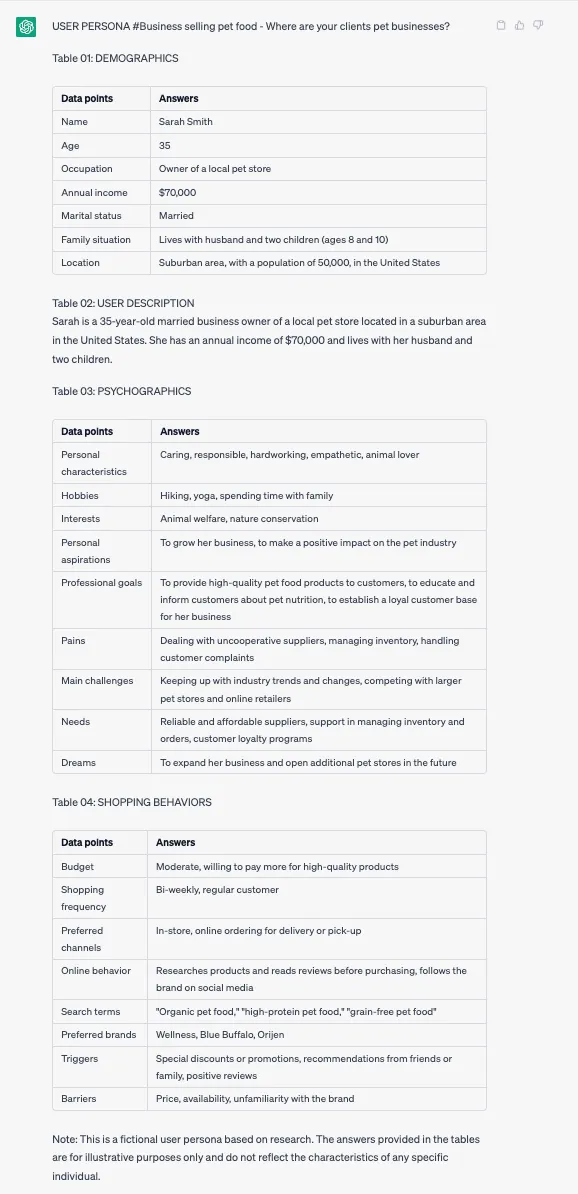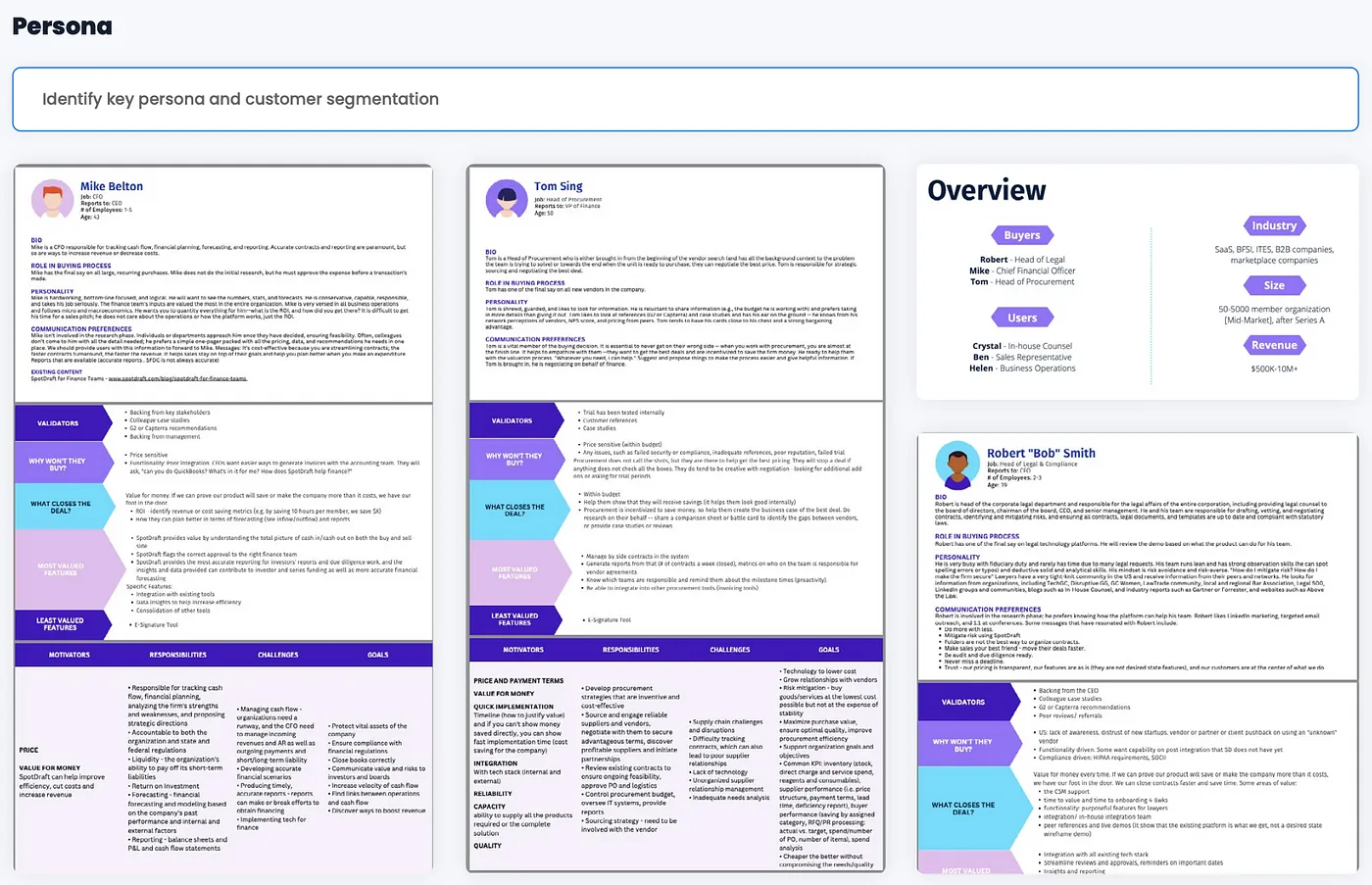
Crafting the perfect marketing personas is critical in any successful marketing campaign. This week, I decided to put ChatGPT to the test.
In this blog post, I’ll share my experience using ChatGPT to create marketing personas and how it compares to other popular options. We’ll explore its features, ease of use, and effectiveness in helping marketers better understand their target audience.
So if you’re a marketer looking for new ways to improve your persona-building process or just curious about how ChatGPT stacks up against other tools, keep reading!
What I did: I revisited Snack Prompt in this article and found the perfect prompt.

Experiment #1: I was curious to see what would happen if I didn’t provide additional information. I copy and paste the prompt just as it is.
The results? Chat GPT-3 randomly picked a business (selling pet food), and followed the prompt closely. Below is the result.

At first sight, it looks like exactly what we need. However, how accurate is the information? What is the data based on? So I asked ChatGPT.

Experiment #2: I decided to try the prompt again, but this time specifying a specific business. I choose a SaaS startup with a marketing tech product. And below is the result.

So, how does this compare with traditional market research methods?
Traditional market research methods include surveys, interviews, and third-party analysis (for example, reviewing Trustpilot, Google business reviews, or Gartner feedback). For personas to be helpful, marketers will need to look at them and be able to answer the following questions:
Who are our customers? For the SaaS startup case above, other potential customers are startup entrepreneurs, enterprise marketing, procurement, and finance teams.
Where can we reach them? The more specific, the better. For a SaaS product, we might look for Gartner or G2 review sites, look for mentions in TechCrunch, or conferences like Collision or MarTech Conferences.
What closes the deals? Different customers care about other things. The startup entrepreneur seeks ways to grow their business at the lowest cost. The procurement team is looking for the cheapest vendor that can integrate seamlessly into the existing tool stack, while the marketing team wants a product that works and can scale their campaigns.
What is their role in the buying process? Customers typically fall under two categories, those with purchasing power and those who are the users. For the marketing tech product, buyers could be the marketing head, procurement, and finance teams, while the users would be the marketing coordinators or managers.
What are their buying triggers? Typically we look for personal, financial, or operational factors that customers consider.
Below is an example of personas I’ve created in the past based on quantitative analysis and qualitative research.

Ranking:
Accuracy- 3/5. ChatGPT was accurate in that it followed the prompt and generated useful information. I suggest conducting your research first through first-person interviews or third-party analysis and then using ChatGPT to confirm or gut-check.
Ease of Use — 5/5. Very easy to use and spits out the requested information within seconds.
Customization: 3/5 — ChatGPT is flexible and customized through prompts, but its underlying architecture and training data limit it.
Scalability: 4/5 — ChatGPT is definitely scalable and can handle large volumes of data and requests.
Originally published on Medium